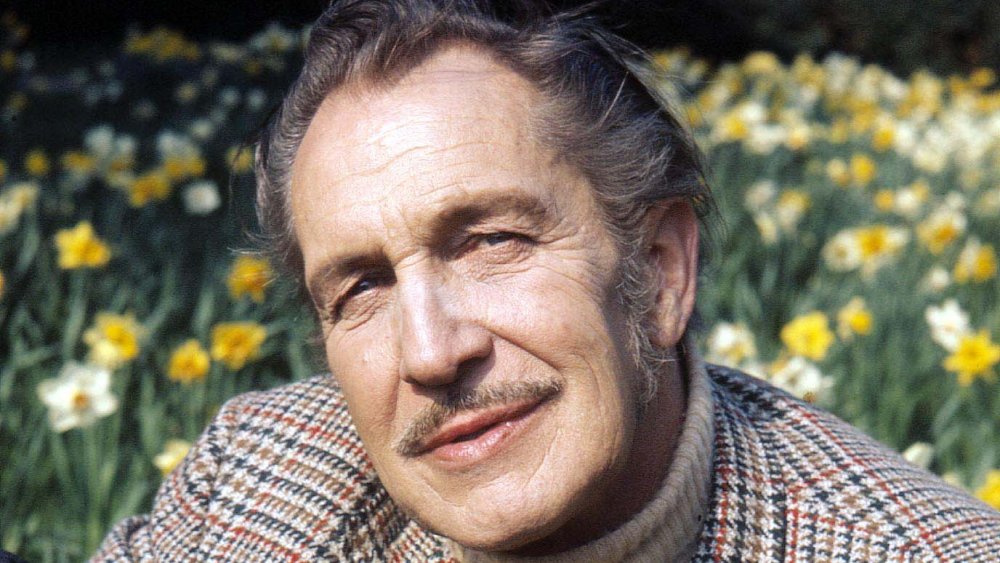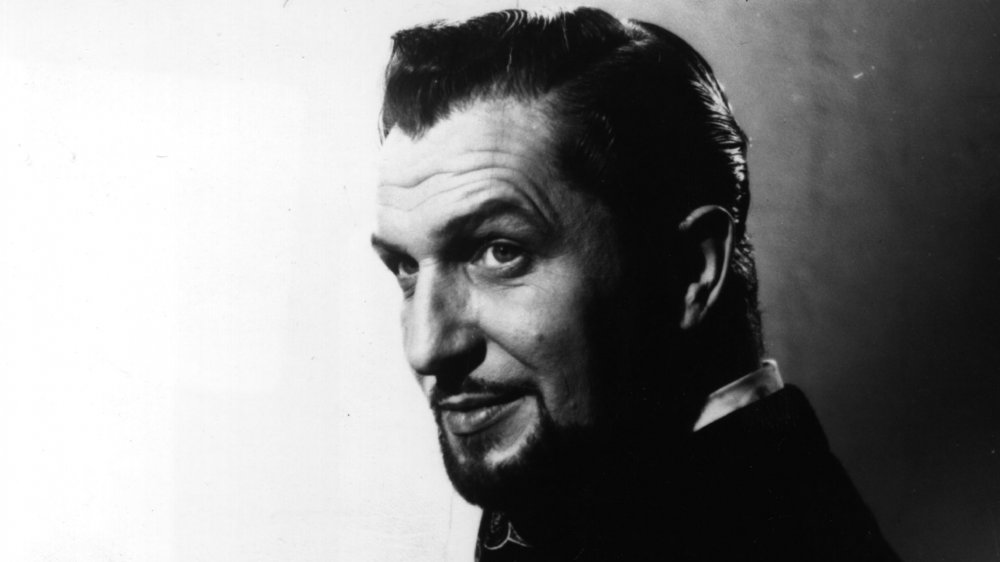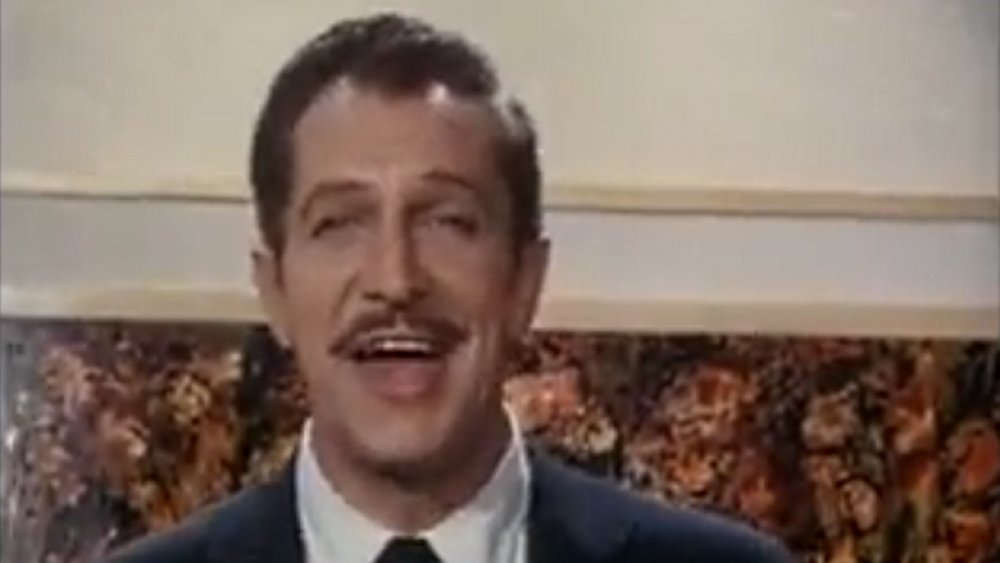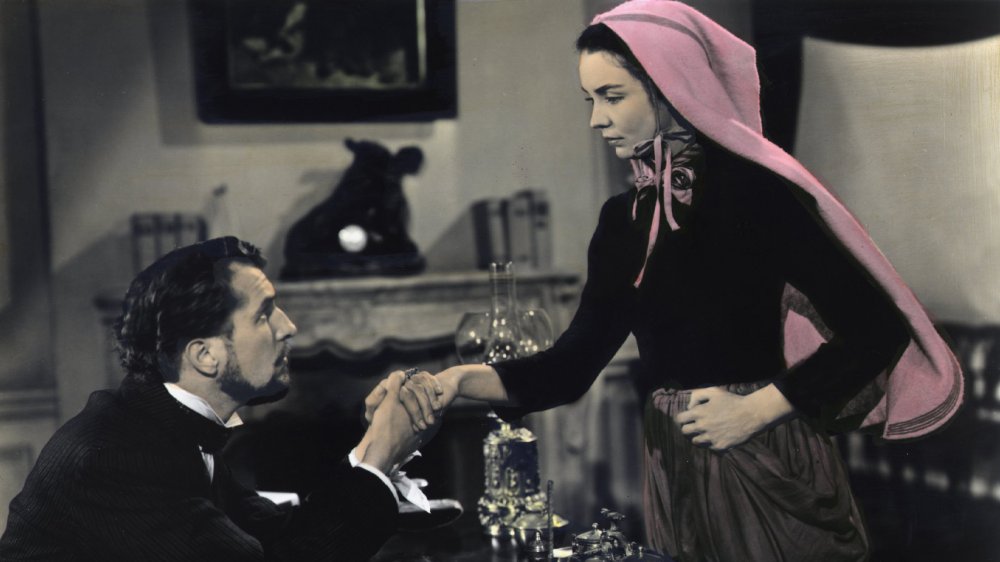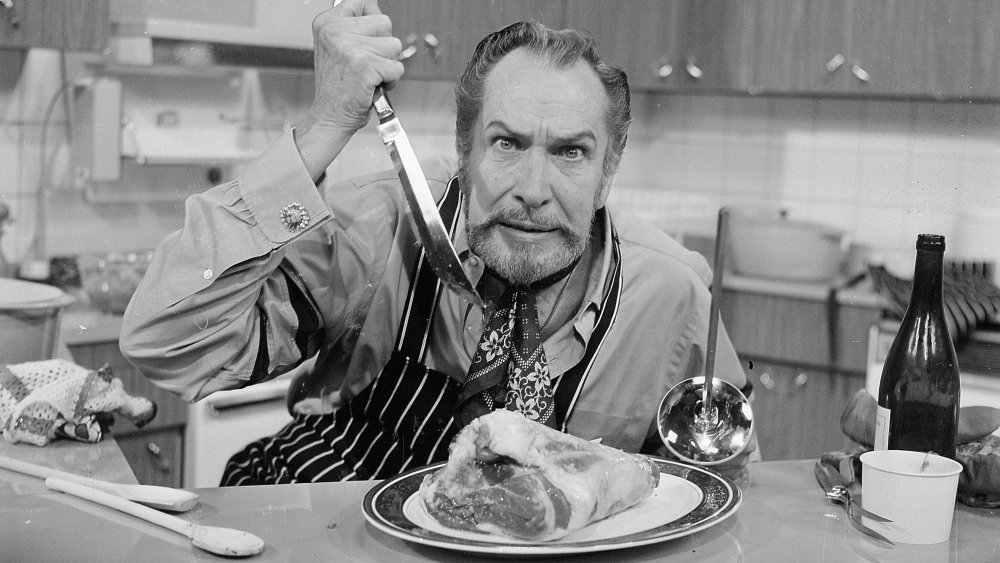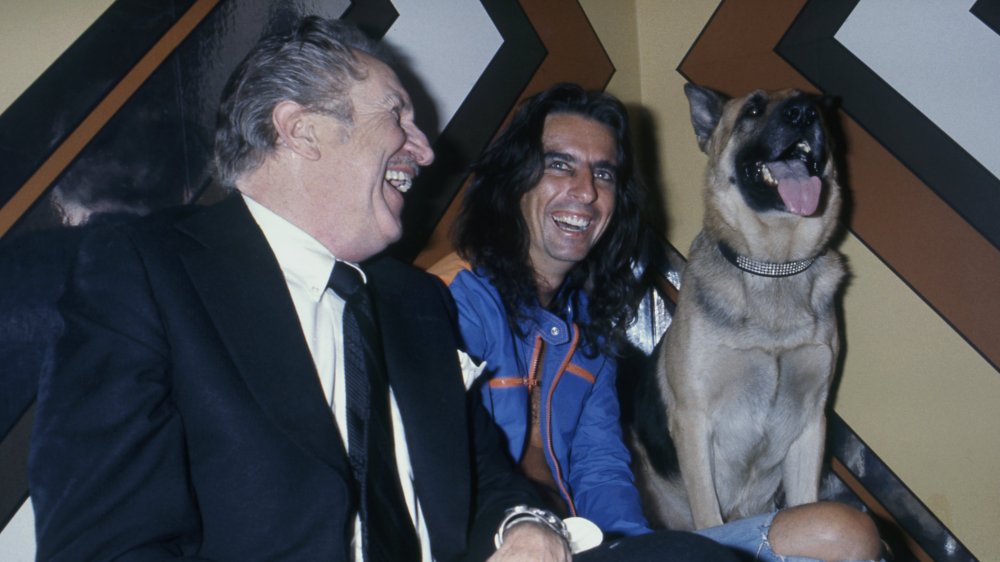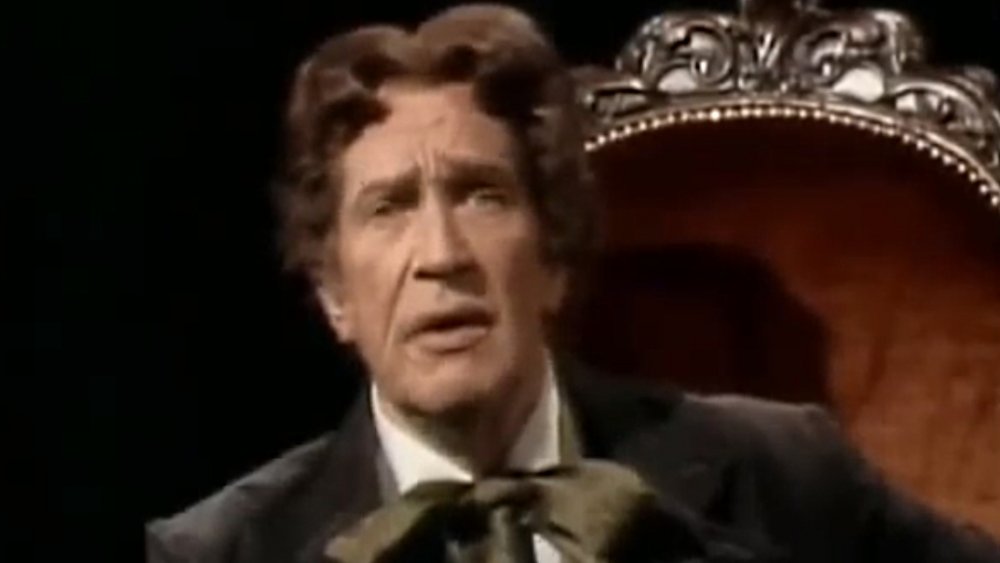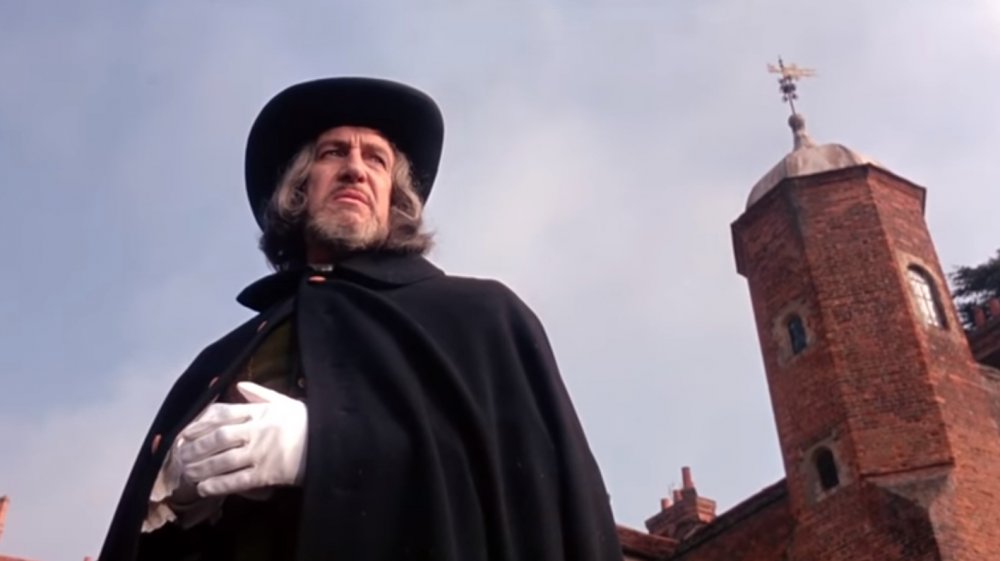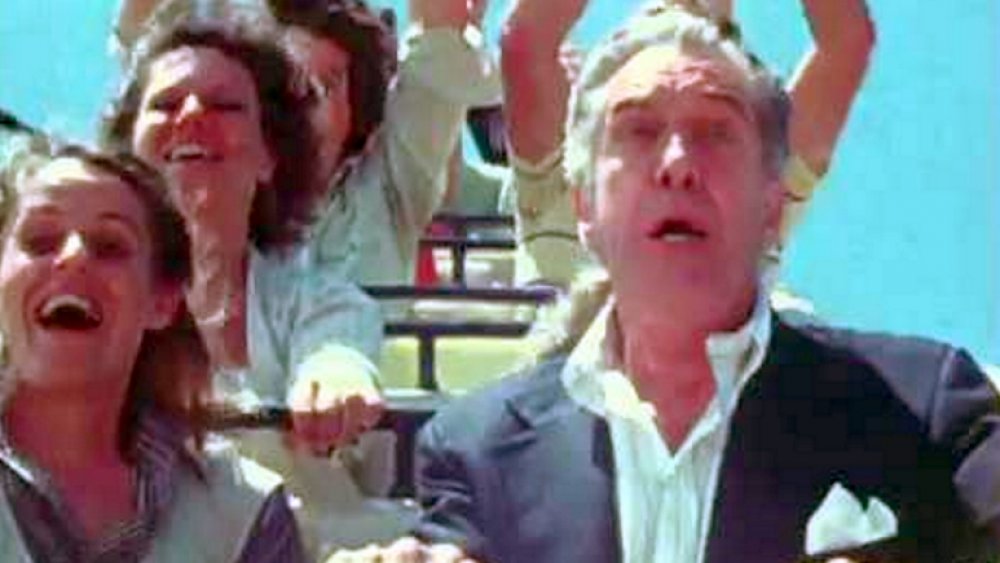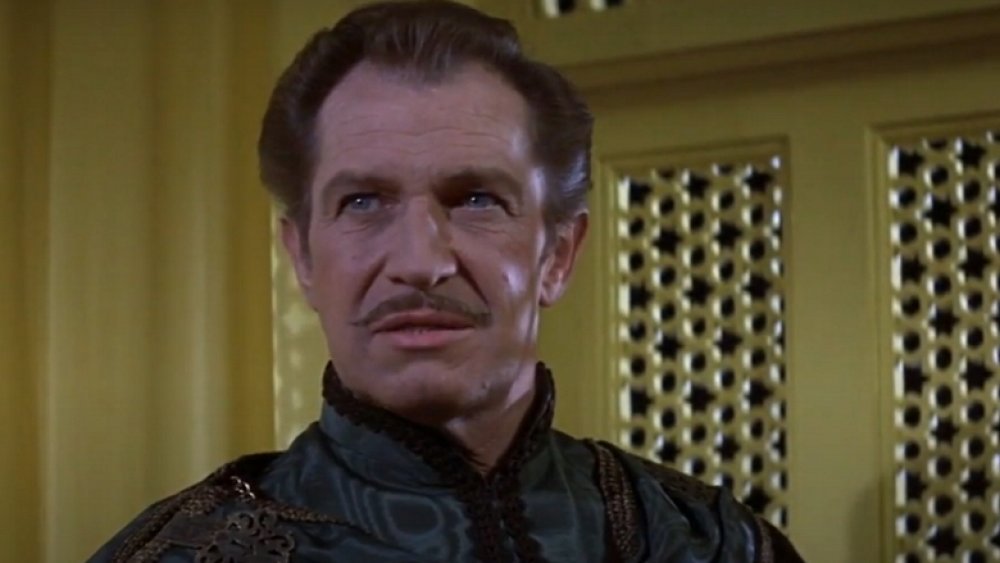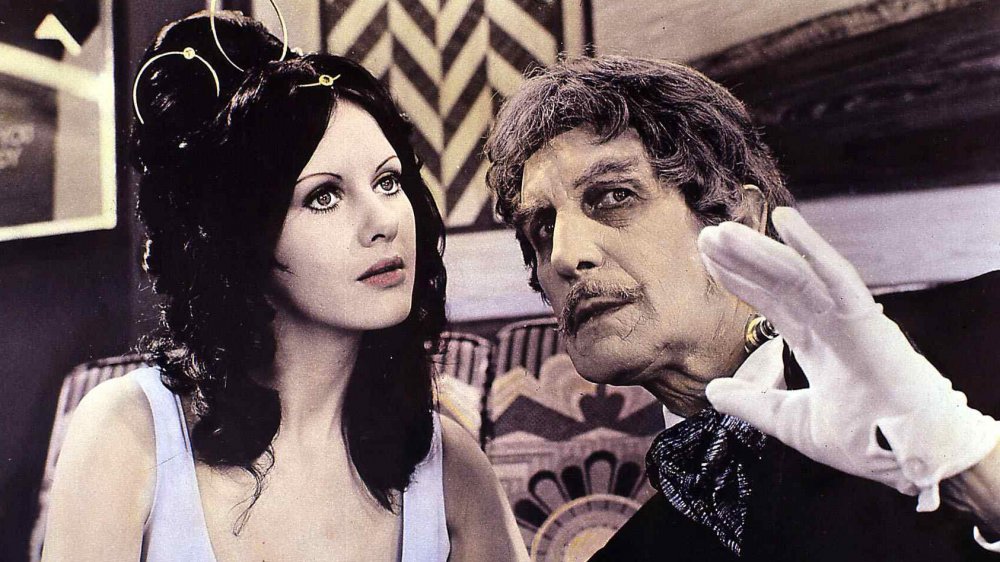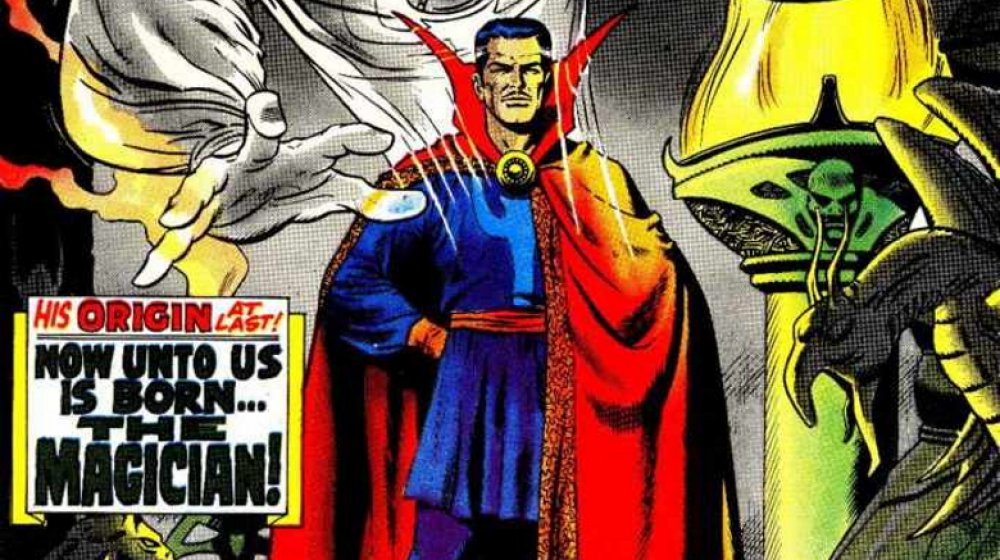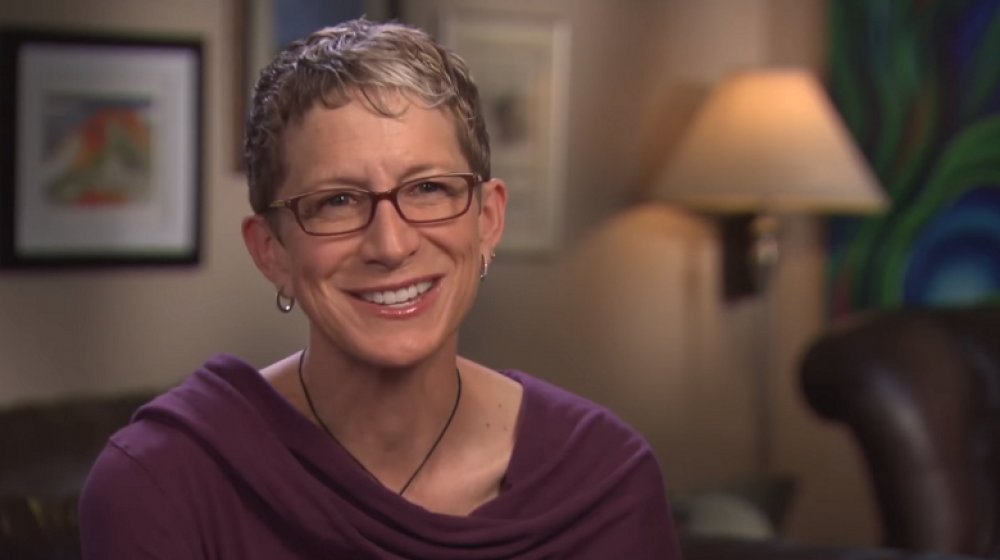Essential Facts About Horror Legend Vincent Price
No one conjures the spirit of classic horror cinema like Vincent Price. With his unmistakable voice, diabolical laugh, and imposing presence, Price terrified audiences for over six decades. Starring in such films as House of Wax, The Raven, and The Abominable Dr. Phibes, Price was famous for portraying desperate men driven to the edge of madness by evil and an insatiable thirst for revenge. Rarely burdened by heavy makeup like previous horror icons, he could evoke terror with the raise of an eyebrow. Most of Price's "monsters" were all too human and, consequently, all the more frightening.
However, offscreen, Price's persona was far removed from the villainous roles that made him a star. A loving father, a connoisseur of fine art, and a gourmet cook, Price was a modern Renaissance man who lived his life with passion, zeal, and joy. Described by his daughter, author Victoria Price, as "a man of glorious contradictions," Price gracefully existed as both an intellectual and a populist whose love of life and experience transcended both class and culture.
Although he passed away in 1993, Price's popularity is unwavering as more new fans discover the beloved actor's patented brand of thrills and humor with each passing year. Whether you remember him as horror's master of menace, the Caped Crusader's campy nemesis Egghead on TV's Batman, or the creepy rapper on Michael Jackson's "Thriller," Vincent Price is an indelible feature on the pop culture landscape. These are the essential and surprising facts of his extraordinary life.
Vincent Price's grandfather invented baking powder
Long before Vincent Price terrified millions, his family made an important contribution to cookery. As related by Victoria Price in her 1999 book Vincent Price: A Daughter's Biography, her great-grandfather, Vincent Clarence Price, was a struggling homeopathic doctor and chemist when he stumbled upon a formula that would change the culinary world. In the mid-1850s, rough financial circumstances forced the young doctor to move back in with his parents, wife and children in tow. With patients scarce, allegedly due to his youthful appearance, he looked to find a way to make himself useful around the house. In his spare time, Dr. Price began experimenting with various chemical formulas to help his mother's biscuits rise more perfectly. Eventually, his hard work paid off when he invented the first cream of tartar-based baking powder.
The importance of his discovery was not lost on the ambitious Dr. Price. He obtained a patent for the powder and partnered with a banker to market and distribute it. Dr. Price's Cream Baking Powder made its inventor and his family rich. However, the food innovator did not stop there — he also pioneered the culinary use of cornstarch and patented the first herb and fruit flavoring extracts. Dr. Price later founded several successful food-based businesses, including the Price Flavoring Extract Company and the Price Cereal Food Company. Dr. Price's son, Vincent Leonard Price, would carry on the family business, albeit reluctantly, as the co-founder of the National Candy Company.
Vincent Price's first love was art
As detailed in his daughter's book, while most kids his age were saving their pennies for bikes or toys, a precocious Vincent Price had his eye on a different prize – an original etching by Rembrandt. Twelve-year-old Vincent made a down payment of $5 on the piece, titled Two Nude Models, One Standing, and spent an entire year saving his allowance, working summer jobs, and running errands to earn the money to own it. Price was instantly hooked on fine art and vowed to become a great art collector.
After graduating from Yale in 1933, Price traveled to London to attend the Courtauld Institute of Art, where he intended to pursue a master's degree in fine arts. However, he would be distracted by another love — the theater. Although he would become a professional actor rather than an art historian, Price pursued and promoted fine art and art education throughout his life.
Noting a lack of opportunity for inner-city students, Price donated a portion of his personal art collection to East Los Angeles College in 1957, creating the Vincent Price Art Museum. In the intervening decades, the museum has grown to house over 9,000 works of art and seven galleries. In 1962, the actor partnered with Sears and Roebuck department stores for The Vincent Price Collection. Handpicked by Price himself, the collection of original paintings and reproductions brought fine art within reach of average consumers.
Most of Vincent Price's roles weren't in horror movies
Although his name has become virtually synonymous with the genre, the majority of Vincent Price's work in film was not in horror movies. According to Vincent Price: A Daughter's Biography by Victoria Price, fewer than a third of the more than 100 movies he made in his career were horror films.
Price began his career in film in the 1938 romantic comedy Service de Luxe. For his second film, Price took on the role of English courtier and explorer Sir Walter Raleigh in 1939's The Lives of Elizabeth and Essex. Throughout the late 1930s and '40s, Vincent Price co-starred in a number of historical dramas and literary adaptations, including roles in Brigham Young (in which he played Mormon leader Joseph Smith), The House of the Seven Gables, The Song of Bernadette, and Laura. Although he would star in Universal's 1940 sequel The Invisible Man Returns, replacing Claude Rains in the title role, Price wouldn't appear in his signature horror role in House of Wax until 1953. Still, his reputation as a master of horror didn't completely crystallize until the 1960s.
Even at the height of his horror career, Price made many appearances outside of the genre. Just three years after House of Wax, he took on the role of Egyptian master builder Baka in the Biblical epic The Ten Commandments. He also lent his voice to several animated films, including his unforgettable turn as the criminal mastermind Ratigan in Disney's 1986 feature The Great Mouse Detective.
Vincent Price was a gourmet cook
Vincent Price's appetites extended far beyond art and acting. Long before the public's obsession with cooking shows and the Food Network, Price was the original foodie. A gourmet chef, Price and second wife Mary Grant traveled the world collecting recipes. In 1965, the couple published their first cookbook, A Treasury of Great Recipes. An instant bestseller, the book has long been a favorite of both professional chefs and home cooks. Long out of print, A Treasury of Great Recipes was reissued for its 50th anniversary in 2015, thanks to the efforts of daughter Victoria Price. "He had an omnivorous appetite for life and for food," Price told NPR of her father.
When it came to entertaining, the Prices were well-matched. "[My mother] was Martha Stewart way before Martha Stewart," Victoria Price said. "And then my dad was the ultimate convivial host and just pure joy." However, it would be a mistake to think of Vincent Price as a food snob. Price's tastes as reflected in A Treasury of Great Recipes run the gamut from rich and complex dishes from the world's finest restaurants to his beloved ballpark favorite hot dogs.
In 1971, Price brought his culinary skills to British TV with Cooking Price-Wise. Produced by Thames Television, the six-part series featured Price preparing meals from around the world with easily obtainable ingredients. A companion book of recipes followed the show.
Vincent Price, rock 'n' roller
Although Vincent Price will be forever remembered by '80s kids for his unforgettable "rap" and ominous laugh on Michael Jackson's smash hit "Thriller," his work on one of the best-selling albums of all time was far from his only foray into music and youth culture. Already beloved by the drive-in set because of his roles in American International's Edgar Allan Poe films, Price made a brief but memorable appearance in the studio's 1963 musical romp Beach Party as Big Daddy, the zenned-out owner of a surfer hangout. Price enjoyed his popularity with young fans, and Beach Party increased his visibility among teens.
The next decade would find Vincent Price voicing the Curator on the song "The Black Widow" from Alice Cooper's 1975 solo record Welcome to My Nightmare. Price is in fine form on the cut, going from amiable museum tour guide to crazed maniac as he expresses his admiration for the deadly spider. Following the album's release, Price appeared in an expanded role in the TV special Alice Cooper: The Nightmare as "The Spirit of the Nightmare." The same year, Price joined hard rockers Deep Purple as narrator for their rock opera The Butterfly Ball and the Grasshopper's Feast.
Deep Purple would pay tribute to the late horror star in 2013 with their single "Vincent Price." Other bands to honor Price in song include punk pioneers the Misfits with 1978's "Return of the Fly" and ZZ Top with "Vincent Price Blues" from their 1996 album Rhythmeen.
Vincent Price's greatest role
The role Vincent Price considered his greatest triumph was neither in the horror genre nor in a film but onstage. By the late 1970s, Price, still a highly visible presence with guest roles on TV, commercials, and in horror films, grew restless. Although he was as popular as ever, he felt that his standing as an actor had declined. In 1976, Price landed the role that would cement to himself and the world his skills as a serious actor. Diversions and Delights, written by screenwriter John Gay, best known for the films Run Silent, Run Deep and The Courtship of Eddie's Father, presented Price with the greatest challenge of his career, according to Victoria Price. A one-man show, the play is built on the premise that a destitute Oscar Wilde, fresh from prison, has taken on the task of a lecture to make some quick cash.
Price was at first reluctant to undertake a role as complex as that of Wilde, but his third wife, actress Coral Browne, knew he was the man for the job, and with her encouragement, he took the role. The production premiered in San Francisco in 1977 to raves from both audiences and the press. Channeling Wilde's famous flamboyance, Price inhabited the role totally, bringing both humor and pathos to the production.
Following a successful run in San Francisco, Price took the show on the road with successful and often held-over runs in major cities across the world, winning praise and new fans along the way.
Price regretted views he held as a young man
Growing up in a wealthy, Protestant family in St. Louis, Missouri, young Vincent Price adopted the conservative and often latently anti-Semitic and anti-Catholic views that were all too common in the first half of the 20th century. As Victoria Price explains in Vincent Price: A Daughter's Biography, these attitudes, combined with her father's admiration for German culture, eventually led Price to express a degree of admiration for Hitler prior to World War II. "When he went to Germany and Austria as a young man he was struck by a lot of things going on during the Weimar Republic and the disillusion of the empire," Victoria Price told the South Florida Sun Sentinel in 1999. "So when Hitler came into power, instead of seeing him as a dangerous force, he was sort of swept up in this whole idea that Hitler was going to bring German pride back."
However, Vincent Price would soon renounce these views. Questioning his own views as well as the politics of his parents, Price became a vehement enemy of fascism. Running with a crowd of noted intellectuals, including such luminaries as Lillian Helman and Dorothy Parker, helped transform Price into an outspoken advocate for racial and religious equality. In Price's own words, by 1938, he "came to his senses" and became a "rabid Rooseveltian." Still, his earlier attitudes were an embarrassment he hoped to take to his grave.
Vincent Price was a roller coaster fanatic
Vincent Price, the man who thrilled millions in horror films such as The Pit and the Pendulum, loved nothing more than the thrill of a great roller coaster. According to Victoria Price, Santa Monica, California's, Ocean Park was a special place for the actor and his son Vincent Barrett Price. Following Price's divorce from Barrett's mother, actress Edith Barrett, father and son bonded with trips to the aging and somewhat run-down amusement park. Price's favorite part of the park was its classic wooden roller coaster, or "rollie coaster" as the horror star endearingly referred to the thrill rides. Although Barrett avoided the coaster after getting sick after his first ride, Dad would not be denied his fun. Price would ride while Barrett dutifully waited. When the original Ocean Park closed in 1956, Price greased the palm of a park worker for one last ride alone.
In 1978, the world experienced Price's love of thrill rides firsthand when he appeared as host and narrator of the documentary America Screams. Airing on PBS, the hour-long documentary directed by filmmaker Scott Campbell features Price exploring classic amusement parks and riding his beloved "rollie coasters" with delighted fans. Price's daughter, Victoria, who, like older brother Barrett, shared many cherished childhood memories with her father in amusement parks, teamed with Campbell for an update of the documentary in 2020.
Vincent Price was an advocate for Native American causes
Vincent Price had a fondness for Native American art and culture that transcended his interest as a collector of artifacts. Price's love of Native art, combined with his star power, made him a powerful ally to the Native arts community, leading to his appointment to the Department of the Interior's Indian Arts and Crafts Board in 1957. Eventually serving as chairman of the five-member council, Price was charged with the operation of two museums dedicated to Native American art and aided in developing policies to promote the economic welfare of Native peoples through traditional arts and crafts.
In a 2014 interview conducted by the Santa Fe Reporter, Ryan Flahive, archivist at the Institute of American Indian Arts, explained how Price's advocacy and support continue to influence Native art and education. "He was known as an art connoisseur for most of his life. He was also a very outspoken critic of federal policy concerning minorities — Native people in particular."
The horror star was particularly taken with the IAIA's talented writing students. On his first visit to the school located in Santa Fe, New Mexico, he established the "Vincent Price Awards in Creative Writing," a stipend for students of prose and poetry. "In my mind, the awards set a precedent and foundation for the strong creative writing program at IAIA. [...] I'm not sure creative writing would have been as successful at IAIA without Price's early support," Flahive said.
Vincent Price was an early supporter of the LGBTQ movement
Rumors regarding Vincent Price's sexuality have run rampant for decades. In a 2015 interview with Boom featured on the website LGBTQ Nation, Price's daughter Victoria confirmed what many had intuited about her father. "I am as close to certain as I can be that my dad had physically intimate relationships with men," she explained. "I know for 100 percent fact that my dad was completely loving and supportive of LGBT people." When Victoria Price came out to her father, he compassionately responded with support and empathy. "You know, I know just how you feel, because I have had these deep, loving relationships with men in my life — and all my wives were jealous," Price said.
Vincent Price's earliest public support of the LGBTQ community came in the 1970s, when he publicly denounced singer Anita Bryant's notorious anti-gay crusade. While touring with his one-man show as Oscar Wilde, Diversions and Delights, the actor quipped that Wilde had already written a play about her, A Woman of No Importance. Price also served as an honorary board member of the lesbian, gay, bisexual, transgender, and queer (LGBTQ+) advocacy organization PFLAG and was one of the first celebrities to appear in public service announcements to help alleviate public fears about AIDS.
Vincent Price was the inspiration for Dr. Strange
Dashing, debonair, and, at least on-screen, villainous, Vincent Price wasn't exactly what most comic book fans would call superhero material. However, when legendary comic artist Steve Ditko created Marvel's Sorcerer Supreme, he turned to none other than cinema's master of menace for inspiration. First appearing in 1963's Strange Tales #110, Doctor Strange fought the forces of evil not with his fists or extraordinary superpowers but with black magic. A unique hero with an elaborate cosmology, the character became a favorite of counterculture audiences.
Co-created by writer Stan Lee, Strange bears an uncanny resemblance to Vincent Price, complete with angular features and swept-back hair. The character would also bear the horror star's name in tribute: Stephen Vincent Strange. Coincidentally, Price would play sorcerer Dr. Erasmus Craven in Roger Corman's The Raven, giving audiences a glimpse of what a cinematic Doctor Strange might look like decades before Benedict Cumberbatch's 2016 portrayal.
Vincent Price's daughter carries on his legacy
Vincent Price's daughter, Mary Victoria Price, was born on April 27, 1962. The child of Price and his second wife, costume designer Mary Grant, Victoria Price is a noted designer, author, educator, and inspirational speaker. In 1999, she wrote the definitive biography of her father, Vincent Price: A Daughter's Biography. Facing a period of personal crisis, Price abandoned her former life to pursue a path of spiritual growth. In 2016, she entered a period of intentional homelessness, during which she traversed the country gathering material for her inspirational book The Way of Being Lost: A Roadtrip to My Truest Self.
Price maintains her father's legacy through the official Vincent Price website and has been instrumental in the reissuing of her father's writing, including the cookbooks he co-wrote with Mary Grant. A favorite on the horror convention circuit, Victoria Price is, ironically, not a fan of horror movies but is a self-proclaimed "fan of horror fans."
